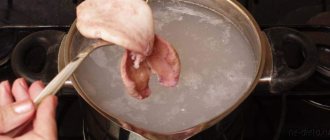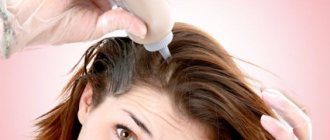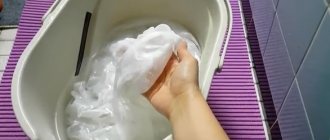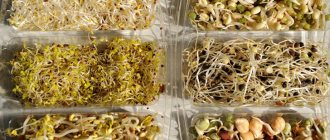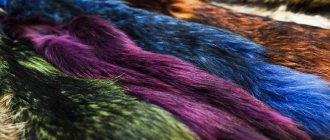To wash off henna from the skin at home and make sure that not a trace remains of it, you can use various means. You can remove mehendi and henna stains, for example, using sea salt, alcohol-based lotion and various solutions, such as 10% ammonia solution. To solve this problem, you can also prepare your own solution from baking soda and lemon juice, olive oil and cognac.
Effective ways to remove henna
Decorating the face and body with henna using the mehendi technique has been known for a long time. It was used by Indian women. Surprisingly, the tradition has come to us.
Mehendi, when compared with well-known tattoos, has certain advantages:
- a design you don’t like is easily washed off;
- a boring pattern can be easily replaced.
Our women use henna not only to apply a temporary pattern on the body, but also to dye their hair. This natural substance gives the hair a pleasant red tint, and the hair structure remains unharmed.
To quickly wipe away traces of henna on the skin, experts will recommend using special products. Not everyone can afford them due to the high cost of the drugs. These products are sold in tattoo parlors, hairdressers, and specialized stores.
Despite the fact that the preparations are expensive, they provide instant cleansing of henna from the body. They have a peculiar unpleasant odor. They should be used with caution due to the risk of developing an allergy to any of the chemicals present in the drug.
Such products most often contain ammonia, so you should be careful when using
It is not difficult to wash henna from the skin of your hands, but you will still have to make an effort. For this purpose, it is preferable to use specialized products, but they are not always available. There are times when you need to remove mehendi in one day. The following tools will help with this.
Hot water
It is most often used to remove paint from the body. It is enough to take hot water (the temperature should be as high as possible) and steam the henna-treated area of the body in it. To rinse off, use a soapy sponge (it should be hard). The contaminated area should be rubbed well. You can completely remove a natural tattoo in 2–3 baths.
Features of the dye
Henna has been used to color and strengthen hair for a very long time. Powder from the plant is used:
- for hair coloring;
- eyebrows;
- when painting the body.
Many people prefer to use henna for hair, as this dye contains natural ingredients. It may also contain other additives that give different shades to the paint.
We recommend: Silicone sealant and how to safely remove it
The most durable henna is considered to be a natural red hue. This color will stay on your hair for a long time and will not wash off. There are several types of henna sold in stores. To get the maximum effect, you should choose a more expensive product, for example, Indian henna. This dye perfectly covers gray hair, while adding shine to the hair, making it more manageable and elastic.
If dark spots come into contact with the skin during hair coloring, it is difficult to get rid of dark spots. Before you start working with henna, you should put on disposable gloves, open the bag of powder and dilute it with warm water in the indicated proportions. The consistency of the dye should resemble sour cream. If you make the powder too thin, it may run when applying the dye to your hair, which will lead to contamination of the skin.
When dyeing your hair, you should take care of special clothing in advance. When applying the mass to the strands, it may come into contact not only with the body, but also with clothing.
After washing off the dye, the hair should be washed well and dried with a towel. To do this, it is better to select it in advance, given that after use it will remain stubborn stains from henna.
Although dyeing with henna has certain disadvantages, for example, staining the skin or clothes, the benefits of dyeing after its use are undeniable.
This powder is ideal for owners of oily hair, while slightly drying it, giving the curls shine and volume. In addition, the strands begin to get dirty less.
Coloring will also benefit those with thin strands, filling the scales and making the hair thicker, while nourishing the strands and strengthening the roots.
In addition, henna is used not only for hair coloring, but also for body painting. When applying mehendi, you can admire the beautiful design for 2-3 weeks. Unfortunately, over time, the paint wears off or is washed off by external influences, and the design becomes less attractive. If there is no possibility or desire to correct the pattern, you can try to wash off the remnants of the pattern from the skin.
The benefits of using natural dye for skin and hair are great, so it is important to know how to quickly remove stains after applying the mixture. Henna stains are very difficult to remove. In order to completely erase them, different methods are used. If you do not wash off the paint from the skin, it will remain on it for several more days, which is quite inconvenient.
Radical methods of washing henna
It is quite difficult to wash henna off your hands, so it is recommended to use more radical and aggressive methods. They should absolutely not be used on the face due to the high risk of irritation, rashes or dry skin. These methods should be used in exceptional cases when safer and more gentle methods have not had the desired effect.
To easily remove a henna tattoo from your hands, use hydrogen peroxide or ammonia: wipe the contaminated area with a cotton pad soaked in the chosen product, and then rinse with plenty of water. When processing, move from the edges of the stain to the center to avoid increasing its area.
You can remove natural dye from your hands yourself at home, using folk or cosmetic products
A strong solution will help remove the stain:
- Combine 1 tbsp. l. ammonia, 5 tbsp. l. hydrogen peroxide and water.
- Apply the resulting mixture to the stain with a cotton pad and leave for 10 minutes.
- Rinse off the solution and dirt with warm water, and then use a rich cream.
You can erase traces of henna from the skin using folk or cosmetic products, as well as through mechanical action. To avoid having to consider options for removing stains, take care of protecting the dermis in advance: wear gloves, try to dye your hair or skin as carefully as possible, and generously lubricate the area around with greasy cream or Vaseline.
How can you wash henna?
Fresh henna stains have a bright red color; over the next two days, the painted areas will darken. You can remove staining in the first 30 minutes using a soap solution and thoroughly rubbing the skin.
Various means are used to remove such stains. Henna is sensitive to high temperatures, so before using any of the recipes it is recommended to steam the colored areas of the skin.
Hydrogen peroxide, lemon juice, vinegar, and ammonia have a bleaching effect, which makes stains lighter. Using products with abrasive particles (scrubs, sea salt, soda, clay) helps exfoliate the top layer of the epidermis, which allows you to wash henna off your hands and face.
Advice! The most effective way to remove henna stains is vegetable oil. Burdock helps especially well.
Folk remedies for removing henna from skin
Henna tattoos came to us from India. They have been making them there for more than 12 centuries, so many ways have been created to speed up the removal of dye from the body.
Ammonia
This method can remove henna from the first application. You will need to apply a 10% ammonia solution to cotton wool and wipe the tattoo several times. Afterwards rinse with water.
Vinegar
You can wash off your tattoo with a vinegar solution. You will need to mix it with water in a 1:1 ratio. Then soak a cotton pad in the solution, wipe the stained areas of the skin, and rinse.
Nail polish remover
The method is simple and effective. Apply the product to cotton wool and treat the tattoo.
Hand cream
First you need to grease the drawings with rich cream and leave for 30 minutes. After this time, wash off everything with a washcloth and soap. Repeat if necessary.
Water
Perhaps this is both the easiest way to remove henna, and the fastest. Simply pour hot water into a basin or bowl and steam your tattooed arms or legs in it. Or take a bath if the pattern is on the body. After 3-4 baths, the henna will be completely washed off. After steaming, you can use a pumice stone or a scrub, the main thing is not to overdo it and not damage the skin.
Soap
Antibacterial or laundry soap is suitable for this method, as it has a whitening effect. To wash off the remnants of henna from the skin, you need to soap a brush (or a toothbrush) and rub the stained areas. If the tattoo was done on the hands, then special attention should be paid to the nails.
Advice! If this method is combined with steaming with hot water, the effect will be better.
Coarse salt
You need salt of about medium size, that is, not too coarse, but not a powder either. If you don’t have one, you can grind coarse salt in a coffee grinder.
You need to apply a small amount to the skin and rub, but not too much. The salt particles will work as a scrub, removing dead epidermis along with henna.
Can also be used as a bath. Application procedure:
- Dissolve salt in hot water.
- Place your hands in it for 20-30 minutes.
- Rub the steamed tattoo with pumice stone.
If the henna design is not on the hand, but, for example, on the neck or thigh, then you can make a salt mask. For this:
- Prepare a strong salt solution.
- Soak a cloth or bandage in it.
- Apply to the area of skin with the tattoo.
- Leave on for 1 hour and then wash off.
Attention! All salt methods are not suitable for those who have scratches or wounds on their skin.
Scrub
If you need to wash off pigment from your face, then this method is the most effective. Application is simple:
Apply the scrub to the skin and massage, then rinse and lubricate with moisturizer.
Vegetable oil
You can remove henna using various oils. For the best effect, they need to be heated in a water bath, then generously lubricate the skin with it and wait 30-40 minutes. Wash off with soap and water. You can use any oils: olive, sunflower, castor.
Advice! To make the method more effective, wrap the painted area of the body with cling film.
An improved version of the recipe is to mix the oil with cosmetic clay in equal proportions. Apply the mixture to the painted area and rub. The scrubbing properties of clay will help remove the pigment faster. Repeat the procedure several times, then moisturize the skin with cream.
Alcohol
To remove henna with alcohol, you can use alcohol lotion or vodka. They need to soak a cotton pad and wipe the stained areas.
Attention! This method cannot be used if the skin has wounds or scratches.
Dentifrice
Thanks to the whitening properties of this powder, henna can be removed after just 5-6 uses. First you need to wet the toothbrush and the area of the body with the pattern, then apply the powder to the skin and rub with a brush with gentle movements.
Olive oil+cognac
The method is quite simple. The required volume of substances depends on the size of the pattern; the larger it is, the more ingredients will be needed. So, to wash off the remnants of a tattoo, you need to make a mixture: combine oil and cognac in equal parts, apply a thin layer to the skin and leave for an hour. Then lather and rinse. It is better to use laundry soap.
Soda+lemon
This method must be used very carefully, since soda and lemon themselves are aggressive substances. Lemon juice can be replaced with citric acid, but it will need to be diluted with water before use. This method will help remove henna very quickly.
It is necessary to mix soda and lemon juice, apply the bubbling mixture to the drawing. Leave for 10 minutes and then wash off using a washcloth. Remaining stains should be wiped off with soap.
We recommend: How to remove stickers from clothes at home
Peroxide
Products from the first aid kit, such as hydrogen peroxide, will help remove henna from the skin. You need to soak a napkin in the solution and apply it to the skin with the pattern for 5-10 minutes. After the henna has become sour, you can wash it off.
Attention! Do not use on damaged or sensitive skin, peroxide may cause chemical burns.
Folk remedies
The most effective are considered:
- Yeast;
- Vegetable oil;
- Homemade kefir;
- Old sour cream;
- Alcohol;
- Vinegar;
Basic Recipes
- “Pulling out” color using an oil mask . A good henna neutralizer is olive oil. Each of you can prepare such a remedy. Take an amount of oil sufficient for your length of curls and heat it a little. Using your hands, distribute the oil mixture over the entire length of your hair. To enhance its effect, put on a plastic cap and wrap your head with a towel. The duration of action is two hours.
Apply oil to the strands with your own hands.
- Using sour sour cream . The method, although not very convenient, is effective. Take the missing sour cream and apply it to the strands, wrap your head in plastic and leave it like that for an hour. It will help tone down the red tone.
- Yeast and kefir . For one glass of kefir, take forty grams of yeast. Dissolve them in liquid and apply the suspension to the strands. Distribute over the entire length; keep this mixture on your hair for at least two hours.
Masks will help restore your natural shade, but not right away - you will need patience!
- Alcohol will help open the scales . Take alcohol (70%) and apply it to your hair. Leave it on for five minutes, no need to rinse off. At the end of the time, distribute any oil over the strands, to enhance the effect, wrap your head and leave for 30 minutes. (See also the article Burdock for hair: features.)
- Also, in the question of whether it is possible to wash henna off your hair, regular table vinegar will help . Take sixty grams of vinegar and pour it into a bowl of warm water. You need to keep the strands in this water for ten minutes.
- Then rinse with plenty of water, wash with shampoo and apply any balm . And your curls will become a copper color.
Probably, many girls are also interested in how to remove black henna from their hair.
If you do not want to give up dyeing your strands with henna, but you do not want to have a red tint, then you can change the color a little using coffee beans.
Grind four tablespoons of coffee beans in a coffee grinder and mix with two tablespoons of henna. If your hair is long, you need to increase the amount.
We brew the raw materials for coloring not with water, but with warm kefir. In this case, you will end up with dark hair color.
How to get rid of red hair immediately
If you dyed your hair with henna, and quite a lot of time has passed, then you can get rid of the color you don’t like like this: take:
- Alcohol tincture of red pepper;
- Gloves;
- Shampoo.
- Shower cap;
We put on gloves and distribute the pepper tincture over the strands. Put on a shower cap and leave for twenty minutes. Then wash off the tincture with regular shampoo.
This method is more suitable for owners of oily hair. And for those who have normal or dry hair, you can prepare the following mask: take one yolk and mix it with cognac or rum (50 g).
Distribute the mixture over your hair and leave for an hour. The mixture should be washed off with warm water.
Don’t rush to get rid of the fiery color right away - perhaps it will make your image bright.
Recipes for masks for removing henna from hair
The pigment is difficult to remove not only from the skin, but also from the hair. Before using the dye, you should prepare a wash in advance, since the remaining pigment can be quickly removed only during the first two days.
In the future, it will be more difficult to cope with this task.
Effective mask recipes for restoring hair color after unsuccessful dyeing:
- Burr oil. You need to slightly heat the component and distribute it over the entire length of your hair. Wrap the top of your head with film, then wrap it with a towel. After 40 min. wash off. The mask allows you not only to improve the shade, but also to restore the damaged structure of the curls.
- Sour cream. To lighten the tone and smooth out the red color, distribute the fermented milk product along the entire length of the hair. Leave for 1 hour. Wash off any remaining residue with shampoo.
- Kefir and yeast. Mix the mask ingredients in a 4:1 ratio. Distribute the resulting mass over the colored curls and leave for 2 hours. When finished, wash your hair with shampoo.
- Vodka, olive oil, honey. All alcohol-containing liquids help open the hair scales, which allows you to neutralize the pigment in the deep layers. Combine 70 ml of vodka, 50 ml of olive oil and 30 ml of honey. Heat the mixture to a comfortable temperature. Distribute the mask over the entire length and leave for 2 hours. After time, rinse thoroughly.
- Yeast and sugar . Combine 1 package of dry yeast with 20 g of sugar. Add 80 ml of water to the dry mixture. Stir until completely dissolved. Leave the mixture to infuse for half an hour, then distribute over the entire length of the hair. Cover your head with film and wrap it in a towel. After 1 hour, wash off.
- Laundry soap. To wash out the pigment, you need to soap your hair generously and massage it. Wash your hair, apply a nourishing mask. Repeat the process every other day.
HOW TO WASH HENNA FROM HAIR?
HOW TO WASH HENNA FROM HAIR?
Many women are afraid of the inability to remove henna, but with our help you can cope with this task.
If the resulting shade contradicts all wishes, you can get rid of it using special masks. Remember that henna must be washed off immediately after dyeing. Further, the color will strengthen, and it will be difficult to wash the coloring component from the hair.
Advice.
Even if you get an undesirable shade, the main thing is to remember that the hair and scalp are being treated. Only if your decision is really conscious and well thought out, you can appreciate henna for hair both as a natural dye and as a healing agent.
1.Rinse with water acidified with vinegar or lemon juice
Hair must be rinsed in a vinegar solution - take 3 tbsp per 1 liter of water. spoons (45 g) vinegar. Fill a basin with warm water, add vinegar. Keep your hair in this solution for 10 minutes. Then wash them with shampoo and conditioner. This will remove most of the paint. In addition, after using this solution, your hair will shine beautifully.
2. Washing with laundry soap
Hair should be thoroughly washed with simple laundry soap, and then oil (olive, burdock, flaxseed, etc.) heated in a water bath should be applied and left for 30 minutes. After the specified time has passed, the strands are washed again with soap. The alkali it contains opens the scales - and the color is washed out, and the hair acquires a natural shade (you can also use kefir instead of oil).
3.Kefir-yeast mask
Mix 40 g of yeast and 200 mg of kefir. Lubricate the strands with the mixture. Wash off after 2 hours. Repeat daily until the desired result occurs (you can add rye bread).
4.Sour cream/fermented milk products
Regular masks made from fermented milk products (kefir, fermented baked milk, sour cream) wash off the natural dye well. Sour cream will help dim the shade and remove the brightness. The strands are generously lubricated with a medium-fat product, a plastic cap is put on, and then the head is insulated with a towel. After an hour, the product is washed off with shampoo or laundry soap.
5.Oil wraps
Henna is quickly washed off from the hair if you do oil wraps (using almond oil, olive, burdock, linseed and other oils). To neutralize too bright a color, you need to heat a few tablespoons of olive oil in a water bath, thoroughly rub it into your hair, put on a plastic cap and then insulate your head with a towel. Periodically warm your head with a hairdryer - this enhances the effect. Then rinse off after 2 hours with shampoo designed for oily hair (or leave overnight). The oil will absorb the henna and most of the color will disappear. After a week, the procedure can be repeated.
6.Mask using alcohol
Note that a mask with alcohol is an aggressive “rinsing” method that can dry out your hair. The strands need to be well soaked in 70% alcohol (100 ml) (moisten the sponge in alcohol, then wipe the hair with it) and leave for 5-10 minutes (alcohol opens the hair scales). Try to avoid the scalp. Then, without rinsing off the alcohol, apply warm olive oil (3 tablespoons) to your hair, wrap your head with cling film or put on a shower cap and insulate with a towel. Periodic warming with a hairdryer enhances the effect. After 30 minutes, the mask is washed off.
It is better to choose a less aggressive rinsing method, but do it a large number of times in order to completely “wash” the color without causing harm to the hair.
To change your hair color after using henna, you must first wash the pigment out of your hair using masks, and then dye it a not too radical color with ammonia-free dye.
Find luxurious hair and experience professional care from nature itself. In our online store you will find what you need. Click here to visit it.
Natural henna for hair coloring and body painting (mehendi), 500 g
2600 rub.
MAKE AN ORDER
If you liked the article and found it useful, then do not forget to share it with your friends.
Remember, sharing is caring!
Stain protection
It is very difficult to wipe off reddish stains, and the most effective methods are harmful to delicate skin. This is why precautions should be taken when working with natural dye.
- When dyeing hair, wear gloves only, they will protect your hands.
- Before the procedure, apply a thick layer of fatty cream, wax and Vaseline along the hair growth contour, carefully smear the ears and neck. These products are easier to wash off than henna stains.
- When applying a henna design to the body, you should have a wet rag or cotton pad on hand - if the line does not turn out as intended, you should remove it until the dye is absorbed.
These simple tips will help you avoid the problem and prevent unwanted areas of your body from staining.
What not to do
Wanting to get rid of reddish spots as quickly as possible, some begin to use all available means. However, it is important to know that the following substances cannot be used to remove henna from the skin:
- petrol;
- washing powder;
- acetone;
- solvent;
- wiper.
They are toxic and will have a very negative impact on the condition of the epidermis, so they should not be used.
Removing henna from the skin is quite problematic, but home methods allow you to do this, albeit with some effort. The main thing is not to use all the means at once.
Ways to remove henna from skin
Almost all modern hair dyes, including henna, are sold complete with protective gloves so as not to get your hands dirty while dyeing your head. In addition, henna design is very popular; this technique is called mehendi. The peculiarity of a tattoo is that it can be quickly erased only within ten days from the date of its application, after which it is extremely problematic to do so.
The following methods will help you wipe off Indian henna from your hands and eyebrows:
- 1. Hot water. Steam the area of the drawing in hot water and rub it with a pumice stone, without making much effort, otherwise abrasions cannot be avoided. If you are unable to remove the stain the first time, it is better to try to wash it off again the next day.
- 2. Sea salt. It is usually sold in the form of large crystals, so it will first need to be ground in a coffee grinder, but not to a powder state. The skin should be slightly moistened with water, sprinkle a pinch of salt on the stain, and rub lightly. It is recommended to repeat the manipulations no more than twice if the mark does not completely disappear on the first try.
- 3. Alcohol-based lotion. Apply a small amount of product to a cotton swab and rub the area with the pattern. So, step by step, wetting the cotton wool, you can quickly remove the mehendi.
- 4. Tooth powder. Wet your toothbrush and dip it into the powder. Rub the spots on moisturized skin in a circular motion, without applying much force. It is quite difficult to wipe off henna in one day, which has managed to penetrate into the deep layers of the skin. Therefore, if you don’t like the drawing or there is a paint stain left, you need to wipe them off immediately, without harm to the skin.
- 5. Olive oil and cognac. Mix them in equal quantities depending on the size of the pattern or area of contamination. Apply the composition to the skin, wash off after 60 minutes using laundry soap.
It is also considered a safe way to use burdock oil or liquid to remove waterproof makeup. A swab soaked in any of these products will remove henna from your hands, skin or eyebrows.
Use of oils
You can remove henna from your eyebrows with oil. This substance does not irritate the skin, unlike most other bleaches. To remove paint, use linseed, castor or olive oil. They are applied to a cotton pad, applied to the eyebrows for 10 minutes, then washed off. You can repeat an unlimited number of times without breaks.
In the same way, you can use any cosmetics with oils, such as creams.
The disadvantage of this method is that it is not possible to completely remove the paint using oils. But it will fade noticeably.
What not to use
Before we begin solving the problem and starting to wash off the henna, we will describe the means that are strictly prohibited from being used for this purpose. To remove an unsuccessful or annoying tattoo, women resort to the most incredible methods. There are frequent cases when the skin of the face and body received severe injuries and inflammatory processes began.
The following substances are strictly prohibited for use to remove mehendi from the body:
- petrol;
- wiper;
- kerosene;
- acetone;
- washing powder;
- products intended for cleaning household surfaces.
Products containing bleaches and solvents may cause chemical burns
How to withdraw?
When henna gets on the skin after dyeing hair or when applying mehendi, it gets on the skin. Therefore, it is worth finding out in advance how to remove stains from your hands at home.
- If henna stains the skin, you can quickly remove it with warm water . To do this, you need to moisten a piece of cotton sponge and rub the contaminated area. If the stain cannot be washed off immediately, you should take a little laundry soap and lather the skin, then rinse with water. This method will only be effective if the paint has not sunk into the skin.
- will help get rid of dirt . Hot water will steam the skin, which will remove stains. This method is more suitable for getting rid of mehendi on ankles, wrists, etc.
- You can remove unsuccessful or boring mehendi using a scrub . It contains special abrasive particles, thanks to which you can easily remove the pattern from the skin. To do this, apply a small amount of the product to moisturized skin and massage.
- You can remove henna from the skin using any vegetable oil . To carry out this procedure, apply a small amount of warm oil to the stained area of skin and cover it with a plastic bag. After 25-30 minutes, remove the bag and wash the skin using baby or laundry soap.
- You can remove stains from the skin during henna dyeing using alcohol lotion . To do this, soak a cotton swab with it and wipe the contaminated area with it.
- You can also replace lotion with vodka . It is important not to rub the skin area too much. After using the product, it is important to thoroughly wash the skin with soap and apply a nourishing cream to the area.
- To remove stains after using henna, take lemon juice and soda. To do this, the components are mixed in equal proportions and applied to the skin when the mixture begins to bubble. After 15 minutes, you need to wash the skin well, then apply a scrub to the area and massage the skin, then rinse with water. In the absence of lemon, you can use citric acid, which is diluted with a small amount of water.
- A mixture of olive oil and cognac removes paint well . Apply the mass to the body for 1-1.5 hours, then wash off with warm soapy water.
- , tooth powder was considered the most popular way to get rid of such stains . To do this, you just need to dip a damp toothbrush in tooth powder and rub it on the selected area. To achieve the desired result, the procedure is repeated several times.
- You can get rid of stains using cigarette ash. To do this, you need to take a sponge, wet it and dip it in the ashes. Use a moistened swab to rub the stain until it disappears.
Using such traditional methods, you can get rid of stains after dyeing the skin with henna. But it is not always possible to wash large contaminated areas of skin, for example, after mehendi, by applying them. To finally get rid of traces of natural dye, you should seek help from professional tattoo salons, etc.
We recommend: How to remove rust from clothes at home
To remove stains from natural dyes using special products, it is important to wear a face mask while working.
This is how you can get rid of dirt.
- Using special removers that are suitable for removing traces of natural dyes. Such removers can vary in price, but they can effectively clean not only henna stains, but also other contaminants found on any surface.
- For removal, use a 10% ammonia solution. With its help you can get rid of even old stains. You need to moisten a cotton swab with the solution and treat the skin with it.
- Using a color corrector, you can also get rid of fresh and old stains. The product contains fruit acids, thanks to which the stain can be easily removed without harming the skin.
It is better to use such methods under the supervision of specialists or following all recommendations received from them.
Tips and precautions
To remove natural dye in the form of henna from the face, it is not always possible to use popular methods that have repeatedly proven their effectiveness. To wash off henna that has got on the skin of the eyebrows and other areas of the face, you should follow the following rules at home:
- You need to be extremely careful when choosing a product to remove henna from the scalp, because the substance can get into your eyes. You can cleanse your face of biotattoo with lotions and oil compositions. If you frequently dye your hair, it is advisable to use a special cosmetic product that removes waterproof makeup. It will have a less pronounced effect, but the advantage will be that it is safe for your skin.
- To avoid getting henna on exposed skin when dyeing your hair, you should apply a rich cream to these areas (temples, ears, forehead). After painting, wipe off the areas of skin treated with greasy cream with a cotton pad. It is better to use the most fatty, thick cream. It will better protect the skin from the penetration of natural dye. This means you will spend less time and effort on cleansing your skin.
- When the method you tried does not bring the expected result, do not give up. Try another method for removing paint residue at home. Only in this case it is recommended to wait 24 hours between procedures. This pause is necessary to prevent injury to the epidermis.
- After you have removed henna using any of the methods described above, your skin should be treated with a moisturizer. This procedure helps restore the regenerative abilities of the dermis.
- It is likely that removing henna or mehendi stains will not be possible in one procedure. Don't be upset. Use the product once or twice and the positive effect will not be long in coming.
- Henna is quite easy to wash off if done immediately after the pigment gets on the skin. Even after washing with plain water, not a trace will remain. It is more difficult to remove old stains, because the pigment is already strongly ingrained.
In order not to waste energy, nerves, and time on cleansing henna, it is better to prevent accidental pigmentation. This is of course possible when dyeing your hair. But, if you have done mehendi, get ready for a long time. It’s better to get a tattoo done by trusted artists and carefully select the design so that you don’t have to look for a suitable way to remove mehendi from the skin.
How long does a henna design last on the skin?
Please note: Vinegar and lemon are considered excellent bleaching agents, but they are not recommended for use to remove henna. They can have the opposite effect and fix the pattern on the dermis. In some cases they can be used, but only as part of complex mixtures.
Henna is often used for tattooing and hair coloring. This product attracts women because it can be gradually washed off and does not harm the skin and hair. In addition, you can erase stains or a tattoo using one of the methods described above.
Cosmetics for removing henna
A woman's cosmetic bag is rich in a variety of products that will also effectively help cleanse the skin of pigment. The most effective include:
- sea salt . The abrasive properties allow you to use this substance in the same way as a scrub - apply a small amount of crushed sea salt to damp skin and massage lightly. A natural scrub will exfoliate the upper colored layer of the dermis;
- alcohol-containing lotion . To use, soak a cotton pad in the cosmetic product and wipe the contaminated areas, changing the cotton as it gets dirty;
- nail polish remover . The product is used to cleanse painted nails and fingers, but its use on the face is strictly prohibited;
- dentifrice . Apply the substance to the stained area and rub in with an old toothbrush. Rinse off the composition with warm water and repeat the procedure if necessary;
- scrub _ Cosmetic preparations with a scrubbing effect help whiten the dermis.
A scrub will help cleanse the skin of traces of natural dye. You can use a ready-made cosmetic product or prepare it yourself using sea salt, coffee grounds or sugar as a base.
The described products have a very negative effect on the condition of the dermis, so after treatment, rinse the area generously with warm water and then apply a moisturizer. To restore the pH balance and nourish the dermis with vitamins and minerals, make a nourishing mask.
A warm bath of sea salt will help you wash the mehendi design from your hands. To prepare it, dissolve 2 tbsp in water. l. substances and stir well. Lower your hands and wait for 15 minutes, after which the pattern will become significantly lighter or washed off completely.
Sea salt is effective at removing paint stains, but do not use it if you have wounds, cuts, or sore hands. To cleanse your face, you should use special cosmetic scrubs so as not to damage your delicate skin.
How to prevent staining
When using henna, you should remember that it is better to prevent skin staining than to deal with the consequences. By following simple rules, you can prevent the appearance of red spots.
Basic steps to help avoid staining:
- the dyeing procedure should be carried out with gloves, which will help prevent pigmentation of the hands,
- you can apply a wide strip of rich cream along the hairline, which will prevent the pigment from penetrating into the deep layers of the epidermis,
- melt the beeswax to a liquid consistency and treat the areas adjacent to the hair (as the wax hardens, a protective film is formed).
Advice! If you use henna, always have a damp sponge or pad on hand. This will allow you to wipe away any drops that get on your skin at any time.
Removing mehendi
Henna tattoos, so-called mehendi, are now very popular. They are applied to the palms, feet, even to the back and lower back. But what if you don’t like the drawing, are tired of it, or have partially washed away and now look ugly? There are several ways to remove henna.
- If the image has just been applied and the dye has not yet been absorbed, you should wash the area with warm running water, always using laundry soap.
- However, if time is lost and the henna has already dried, this method will not help; more radical solutions will be required. First of all, you should wipe the stained area with a cotton pad generously soaked in vodka, alcohol solution or medical alcohol.
After this treatment, the painted area is washed with soap and water and lubricated with a rich cream.
If mehendi has been on the body for several days and suddenly there is a need to remove the pattern, you can use the following methods.
- Warm bath. After sitting in the bath for a while to allow the skin to steam, the area with the tattoo should be thoroughly treated with a washcloth or belongings and rubbed vigorously. The procedure will make the pattern less noticeable; the henna will completely disappear after several times. You can clean the painted area using pumice, but this method cannot be called gentle - the upper layer of the epidermis will suffer. However, the dye will wash off quite well.
- Salt bath. If the design is applied to brushes, it can be washed using salt baths. To do this, dissolve 2 tbsp in a small bowl of water. l. sea salt, place the brushes and wait until the water cools down. The pattern will become less noticeable.
- Salt mask. You can also remove henna from the skin using salt masks. This is done if the baths are uncomfortable - for example, when the pattern is located on the back. Making them is simple: moisten an old towel with saline solution (2 tbsp per liter), place it on the area with the pattern, wrap it with cling film and wait for at least half an hour, then rinse with water.
- A small mark or trace of henna can be washed off with antibacterial soap applied to a toothbrush. It is necessary to rub the stained area intensively and then rinse with water.
We recommend: How to choose a good fabric paint and paint a piece of clothing correctly?
Some of the methods that allow you to remove traces of henna will be effective after several procedures.
How and with what to remove henna from hair after dyeing at home?
A large number of girls want to easily change their appearance without harming their skin or hair. It is for this reason that one often has to resort to the use of natural pigments and dyes, which are harmless to the hair but give the desired result. One of these is henna. Practice shows that this is a very simple method of transformation. By the way, henna dyeing was used even many hundreds of years ago.
We recommend reading: Cream for ingrown hairs, which one to choose? reviews
Until now, hairdressers say that the effects of henna on hair are practically harmless. And the biggest disadvantage of this substance is that it can be very difficult to wash off its remnants from the hair. Many girls say that they have attempted to dye their hair and get a different shade. Unfortunately, in 90% of cases it ended in failure. The fact is that even the darker dye was applied to the hair unevenly and in spots. In most cases, women end up with a very interesting shade of hair, which didn’t even look like red, but like orange. So how to remove henna from hair?
Is it possible to get rid of henna on hair?
You can get rid of henna; there is a whole list of tips for this. Each girl can choose the best one for herself based on how often she used the substance, the length and color of her hair, which option for removing the product is more convenient. So, let's look at the most popular methods of getting rid of henna on hair:
- You can use masks created at home, which will remove the henna from your hair and give it a natural color. This option is relevant for girls who prefer to minimize the harmful effects on their curls, since they do not want to restore or cut them afterwards. If a mask is the option that suits you best, remember that you still won’t be able to completely wash the henna out of your hair. But you have a chance to minimize the red tint and bring your hair closer to the color it originally had.
- There is also such a method as repainting or tinting the hair with a darker color . Here, even hairdressing experts say that getting the desired color will be very difficult. Firstly, on henna the dye takes on differently than on hair without using it. Secondly, your regrown hair roots will still be much darker. Even professional paint, which costs a lot of money, will not give a good effect. Therefore, before taking such risky options, it is better to consult your hairdresser. By the way, many experts in this field will tell you that before dyeing it is advisable to wash the henna out of your hair at least partially.
Read: How to lighten hair at home
We recommend reading: Sunsilk hair cream – effect and result
We use folk remedies
Most often, these options include masks, tinctures and solutions that can be made at home at minimal cost. Despite the cost, the effect of them will be noticeable, so you can test one of the methods described below without any problems in practice.
- Do not rush to throw away sour cream that has gone sour. It will help minimize the henna color on our hair. It is necessary to apply the fermented milk product to your hair, then put a plastic cap on your head and leave the mask on for about an hour.
- You can wash the henna and at the same time nourish your hair by making oil masks. The main component will be olive oil. It is necessary to apply the product (preferably heated) to the entire length of the hair. After this, wrap your head with food grade polyethylene or use a special cap. And cover your head with a towel. You can wash off the product after 2 hours with a special shampoo for oily hair.
- You can do things a little differently and treat your hair with 70% alcohol. You need to keep it on your hair for about 5 minutes. Now you immediately need to lubricate your hair with olive oil and warm your head. This consistency should remain on the hair for about half an hour. You can get a greater effect if you warm your hair with a hairdryer. It is advisable to wash off the product with shampoo for oily hair. Please note that the oil will remain on the hair for a long time, so you will have to rinse your hair with shampoo several times.
The essence of this method is that, due to alcohol, the scales on the hairs will open, and the oil will be able to draw out the henna.
- You need to make a mask based on yeast and kefir. To create it, 250 ml of fermented milk product and approximately 50 g of yeast are mixed. The consistency rubs through the hair and remains on it for a couple of hours. This mask must be done every day until you get the hair color you want.
- One simple option is to use laundry soap. It contains alkali, which will open the scales on the hair. But after you have washed your hair as a “hostess”, you need to make an oil mask. Typically this procedure is performed within one month. And at the end of the course, you can dye your hair without any problems.
- If desired, you can use a simpler option. To do this, you need to mix 3 tablespoons of vinegar in a bowl of water. The hair should remain in this solution for 10 minutes. The next step is to thoroughly cleanse your hair using shampoo, and finally apply a conditioner to moisturize your hair for 10 minutes. Remember, this product can remove approximately 60% of the henna.
Read: Hair is falling out a lot. What to do and why is this happening? Top tips
We recommend reading: Hair styling spray, which one to buy, reviews
Clean hair without henna residue
Using one of the above options, you can achieve the desired result, due to which your hair will acquire its natural shade. Remember, the main key to obtaining the desired result is the frequency of use of natural ingredients. Plus, if you've already cleared your hair of a product like henna, you can tone down any remaining shade of red. For this you will need coffee. You need to take 4 tablespoons of the drink and mix it with two tablespoons of henna. As a result, you will get a fairly dark and rich color that you will like.
Don't forget that henna is easiest to wash off 10-14 days after you use it. And it will be much more difficult to carry out the rinsing procedure after this time.
The most effective means
To get rid of traces of henna staining at home, you can use the most powerful means, but it is important to remember that this is an emergency measure, since these substances are very harmful.
- Hydrogen peroxide. It is applied to a cotton pad, then used to wipe the stained skin. It is important to use a 3% solution, because a higher concentration can cause burns.
- Ammonia (10% solution!). The procedure is the same.
- The following solution is even more effective: 1 tbsp. l. ammonia mixed with 5 tbsp. l. water and 5 tbsp. l. hydrogen peroxide, apply to the skin for 10 minutes, then rinse thoroughly with water.
These methods allow you to quickly remove henna from the skin, but they should be used infrequently.
Peelings and scrubs
At home, peelings and scrubs are often used to remove vegetable dye from eyebrows. You can take any product from your cosmetic bag - the product is suitable for both face and body. If there is nothing suitable, then you can use sea salt.
The abrasive is applied to the eyebrows and lightly massaged. This will help exfoliate the colored skin flakes faster.
The downside of the technique is that scrubs cannot be used frequently, otherwise you can damage the skin. And to completely remove pigment, one procedure will not be enough.
Adviсe
Since rather aggressive products are often used to remove henna, colored hair requires careful care. To quickly restore the structure of your curls after washing, it is advisable to follow a number of recommendations.
- Combing wet hair is prohibited.
- Due to the fact that pickling often has a drying effect on the hair, split ends should be constantly trimmed.
- It is prohibited to use chlorinated water during procedures.
- After washing, it is recommended to rinse the curls with a conditioner or herbal decoction.
- Drying hair after washing and restoring activities should be done naturally. Using a hairdryer is only permissible when working with cold air.
- After the procedure of removing henna and further staining, it is advisable to carry out biolamination.
